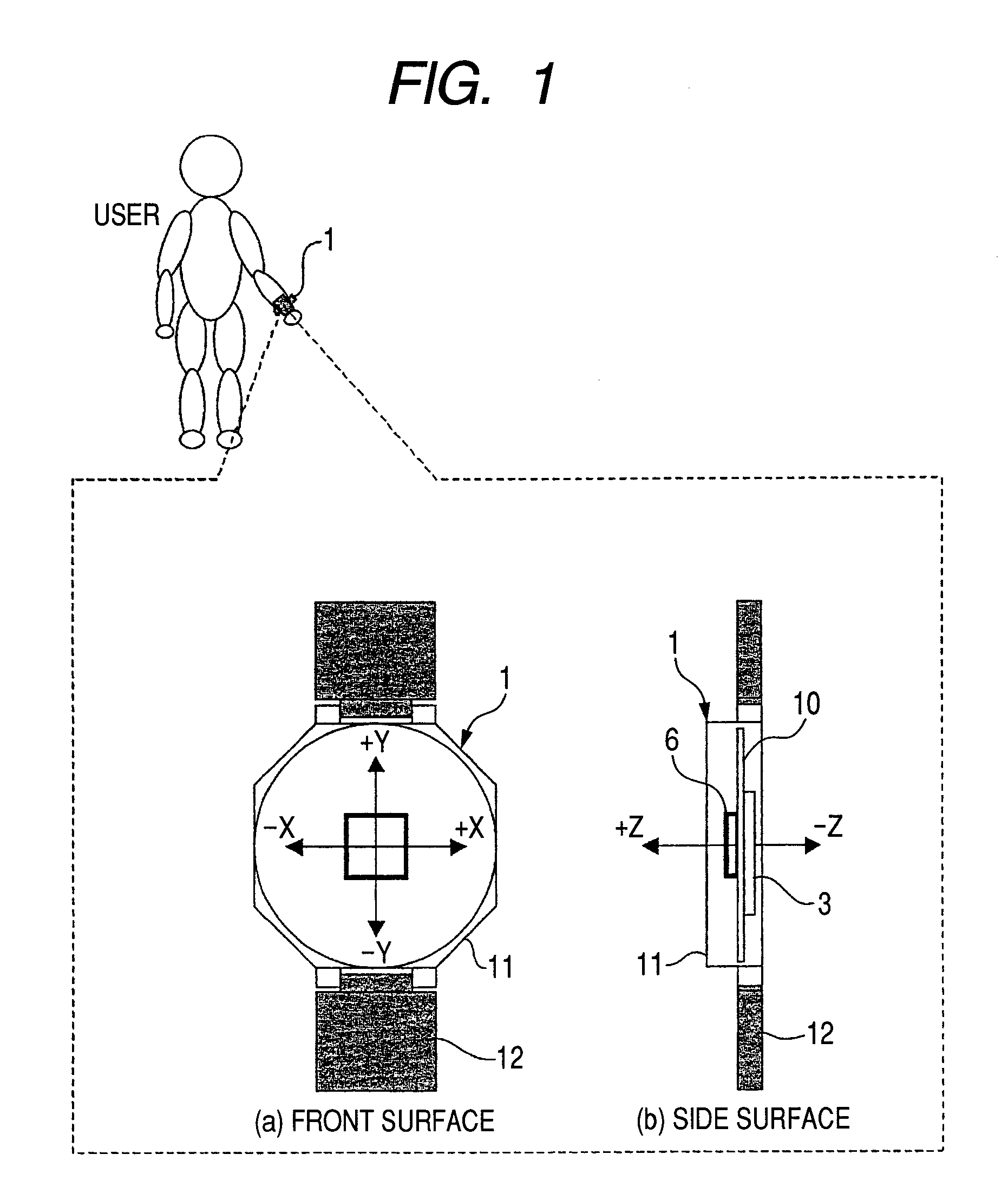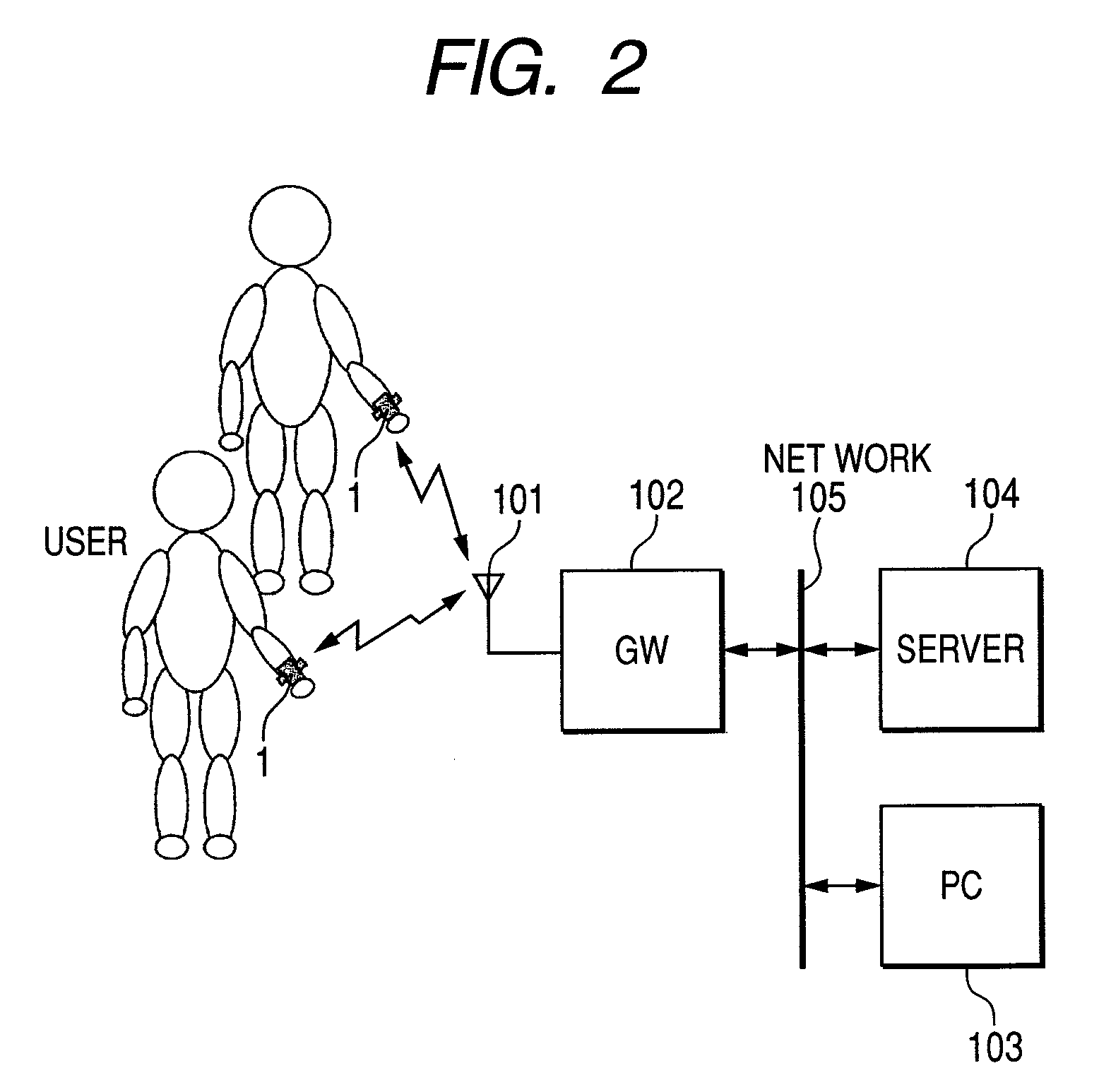Sensor node
a node and sensor technology, applied in power management, instruments, liquid/fluent solid measurement, etc., can solve the problems of limited battery capacity, inability to use for a long time, small and light battery, etc., and achieve the effect of increasing the period of continuous usability
- Summary
- Abstract
- Description
- Claims
- Application Information
AI Technical Summary
Benefits of technology
Problems solved by technology
Method used
Image
Examples
second embodiment
[0078]FIG. 9 shows the second embodiment, in which a pulse wave sensor 9 for measuring pulse waveform is added to the acceleration sensor 6 according to the first embodiment. It is identical to the first embodiment with respect to the other features.
[0079]On the backside of the case 11 of the sensor node 1, a pulse wave sensor 9 including a light-emitting element LD1 and a light-sensitive element PD1 is provided. This pulse wave sensor 9 uses an infrared light-emitting diode as the light-emitting element LD1, and adopts a phototransistor as the light-sensitive element PD1. Incidentally, a photodiode may be used in addition to the phototransistor as the light-sensitive element. On the backside of the case 11, the light-emitting element LD1 and the light-sensitive element PD1 are exposed, and can be facing with the arm skin.
[0080]This pulse sensor 9 irradiates subcutaneous blood vessels with infrared beams generated by the light-emitting element LD1, detects changes in the intensity o...
third embodiment
[0089]FIG. 13 shows partial modifications of the control shown in the first embodiment. In the step S11 shown in FIG. 5 of the first embodiment and #20 in FIG. 6, from the moment when the transmission frame is created until the end of the transmission by the radio communication unit 2, the clock of the microcomputer 3 is maintained at a constant value. In the third embodiment, on the other hand, after the start of the radio communication unit 2, the clock frequency of the CPU 34 is lowered, and other features are similar to the first embodiment.
[0090]In the step S11 described above, the CPU 34 of the microcomputer reads the sensing data (#1-#20) accumulated in the RAM 32 to create a transmission frame 670. And the created transmission frame 60 is transferred to the radio communication unit 2, which transmits the sensing data by radio communication.
[0091]When the created transmission frame 60 is transferred to the radio communication unit 2, the CPU 34 is charged with a low load of c...
PUM
 Login to View More
Login to View More Abstract
Description
Claims
Application Information
 Login to View More
Login to View More - R&D
- Intellectual Property
- Life Sciences
- Materials
- Tech Scout
- Unparalleled Data Quality
- Higher Quality Content
- 60% Fewer Hallucinations
Browse by: Latest US Patents, China's latest patents, Technical Efficacy Thesaurus, Application Domain, Technology Topic, Popular Technical Reports.
© 2025 PatSnap. All rights reserved.Legal|Privacy policy|Modern Slavery Act Transparency Statement|Sitemap|About US| Contact US: help@patsnap.com



